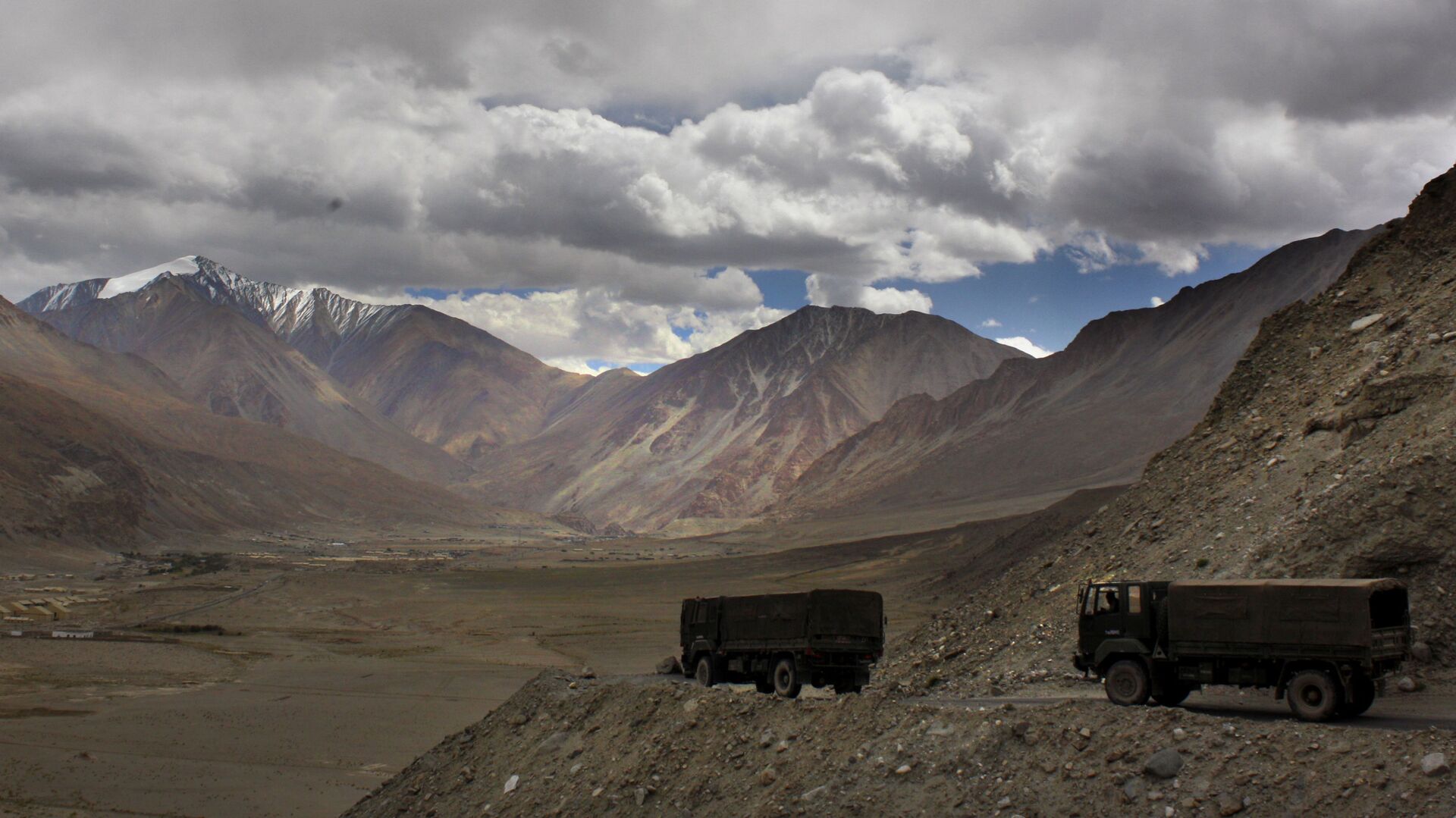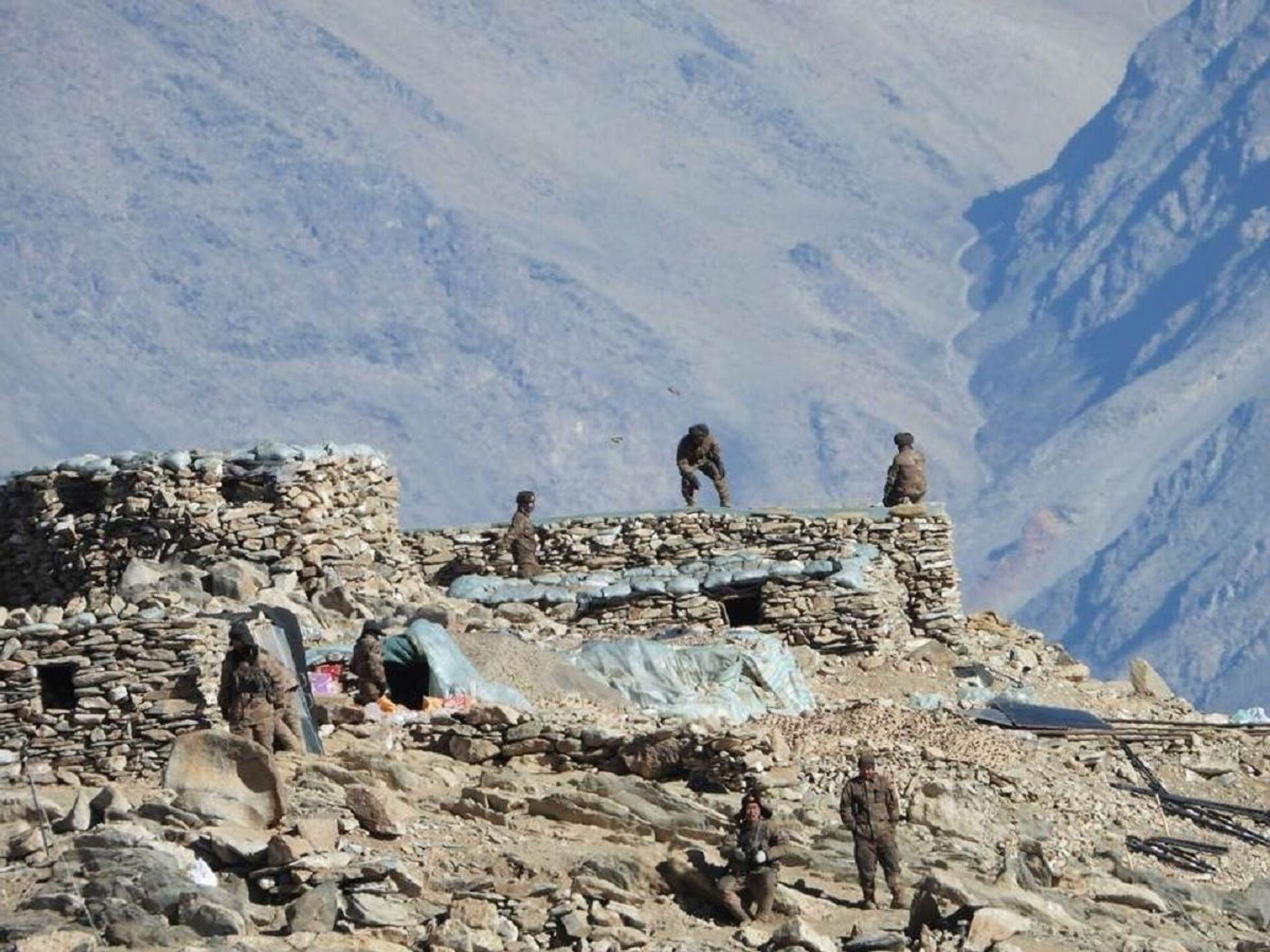https://sputnikglobe.com/20210806/india-china-withdraw-troops-from-most-volatile-friction-point-of-gogra-post-in-eastern-ladakh-1083543774.html
India, China Withdraw Troops From Most Volatile Friction Point of Gogra Post in Eastern Ladakh
India, China Withdraw Troops From Most Volatile Friction Point of Gogra Post in Eastern Ladakh
Sputnik International
The two Asian neighbours, engaged in an intense border standoff since 2020, have reached an agreement on the Gogra Post. The breakthrough came during the 12th... 06.08.2021, Sputnik International
2021-08-06T12:25+0000
2021-08-06T12:25+0000
2022-07-19T10:38+0000
newsfeed
world
asia
military & intelligence
china
border tensions
ladakh standoff
political disengagement
indian foreign ministry
indian army
https://cdn1.img.sputnikglobe.com/img/07e5/05/07/1082825479_394:0:4035:2048_1920x0_80_0_0_af24596b48a48df24defcf01d567dec8.jpg
The Indian Army and China's People's Liberation Army have ceased forward deployments in Gogra (PP17A) along the Line of Actual Control as an outcome of the 12th round of talks between the two militaries. The troops in this area have been in a face-off situation since May of last year.This is a major development after February of this year, when the two countries announced they were pulling back forces from Pangong Tso. After disengagement in Pangong Tso, areas in the western sector of the India-China border, such as Depsang Plains, Gogra, and Hot Springs continue to remain heavily militarised as both sides are adamant about their claim to the land border."This agreement ensures that the LAC in this area will be strictly observed and respected by both sides, and that there is no unilateral change in status quo", the army further said, adding that both sides have expressed commitment to take the talks forward and resolve the remaining issues along the Line of Actual Control in the western sector.During the 11th military commander-level talks on 9 April, according to an Indian media source, China said India "should be happy with what has been achieved". In an attempt to move towards a resolution of border tensions, Indian Foreign Minister S. Jaishankar met with his Chinese counterpart Wang Yi on 14 July but the meeting ended with the two blaming each other for the ongoing border tensions.The border standoff began last year over infrastructure development work in the eastern Ladakh region, which grew into violent clashes on 15-16 June. Some 20 Indian and four Chinese soldiers were killed in the encounter.
china
ladakh standoff
Sputnik International
feedback@sputniknews.com
+74956456601
MIA „Rossiya Segodnya“
2021
Rishikesh Kumar
https://cdn1.img.sputnikglobe.com/img/07e4/08/04/1080055820_0:0:388:389_100x100_80_0_0_40018ee210946d65d49ffba4f4c008e1.jpg
Rishikesh Kumar
https://cdn1.img.sputnikglobe.com/img/07e4/08/04/1080055820_0:0:388:389_100x100_80_0_0_40018ee210946d65d49ffba4f4c008e1.jpg
News
en_EN
Sputnik International
feedback@sputniknews.com
+74956456601
MIA „Rossiya Segodnya“
Sputnik International
feedback@sputniknews.com
+74956456601
MIA „Rossiya Segodnya“
Rishikesh Kumar
https://cdn1.img.sputnikglobe.com/img/07e4/08/04/1080055820_0:0:388:389_100x100_80_0_0_40018ee210946d65d49ffba4f4c008e1.jpg
newsfeed, military & intelligence, china, border tensions, ladakh standoff, political disengagement, indian foreign ministry, indian army, people's liberation army, people's liberation army air force, artillery, tanks
newsfeed, military & intelligence, china, border tensions, ladakh standoff, political disengagement, indian foreign ministry, indian army, people's liberation army, people's liberation army air force, artillery, tanks
India, China Withdraw Troops From Most Volatile Friction Point of Gogra Post in Eastern Ladakh
12:25 GMT 06.08.2021 (Updated: 10:38 GMT 19.07.2022) The two Asian neighbours, engaged in an intense border standoff since 2020, have reached an agreement on the Gogra Post. The breakthrough came during the 12th military commander-level talks on 31 July. In a joint press statement, the two countries agreed to pull back troops from other friction points to calm the ongoing tensions in eastern Ladakh.
The Indian Army and China's People's Liberation Army have ceased forward deployments in Gogra (PP17A) along the Line of Actual Control as an outcome of the 12th round of talks between the two militaries. The troops in this area have been in a face-off situation since May of last year.
"The disengagement process was carried out over two days i.e. 04 and 05 August 2021. The troops of both sides are now in their respective permanent bases. All temporary structures and other allied infrastructure created in the area by both sides have been dismantled and mutually verified", a statement issued by the Indian Army on Friday reads.
This is a major development after February of this year, when the
two countries announced they were pulling back forces from Pangong Tso. After disengagement in Pangong Tso, areas in the western sector of the India-China border, such as Depsang Plains, Gogra, and Hot Springs continue to remain heavily militarised as both sides are adamant about their claim to the land border.
"This agreement ensures that the LAC in this area will be strictly observed and respected by both sides, and that there is no unilateral change in status quo", the army further said, adding that both sides have expressed commitment to take the talks forward and resolve the remaining issues along the Line of Actual Control in the western sector.
During the 11th military commander-level talks on 9 April, according to an Indian media source, China said
India "should be happy with what has been achieved". In an attempt to move towards a resolution of border tensions, Indian Foreign Minister S. Jaishankar met with his Chinese counterpart Wang Yi on 14 July but the meeting ended with the two
blaming each other for the ongoing border tensions.The border standoff began last year over infrastructure development work in the eastern Ladakh region, which grew into violent clashes on 15-16 June. Some 20 Indian and four Chinese soldiers were killed in the encounter.




